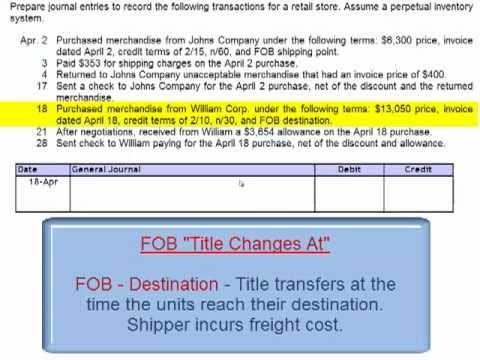Blog
Xero vs QuickBooks for Accounting Features, Fees, Support
It offers plenty of customization options, which can be a great deal for those wanting to present and maintain a professional brand image. On the other hand, Xero lets you add your company logo and edit fields, but you can’t change the invoice colors. Xero, on the other hand, is best for small businesses that want to take the step up from tracking expenses in Excel. It has all the functionality you need to manage transactions, calculate payments and track projects at an affordable entry point.
What Xero offers
Premium includes scheduling for jobs and shifts, real-time reporting, custom alerts, and time-off management. Elite offers all of Premium’s features, plus a project activity feed for better control, project estimates that can be easily compared with actuals, geofencing, and support for timesheet signatures. The base fee for both plans is half off for the first three months. Xero also lets you send quotes and estimates that can quickly pull up data on contacts, inventory, and pricing. Additional automation abilities let you select inventory items from a preset list, quickly duplicate a previous invoice, or set up automatic invoices for repeat orders.
While Xero’s $13 Early plan is far cheaper than QuickBooks’ $30 Simple Start plan, it’s also very limited due to the caps on invoices and billing. A better comparison is the $60 QuickBooks Essentials plan (plus the $45 Core or $80 Premium payroll plans) vs. the $37 Xero Growing plan (paired with the $40 or $80 Gusto plan). Essentials supports just three users, while Growing is unlimited, making it better value for large or growing operations. Granted, this doesn’t mean Xero is the most cost-effective option for your business needs. Here’s how each accounting software vendor breaks down their services, so you can see how they compare.
Even though FreshBooks doesn’t yet offer similar AI-driven tools, both platforms can connect to Zapier AI. This means you can build customized AI workflows to automate tasks, whether you’re team Xero or team FreshBooks. FreshBooks’ reports may be more aesthetically pleasing and easier to navigate, but Xero’s include the level of detail needed to stay organized as your company grows. When comparing the reports generated by FreshBooks vs. Xero, I found Xero’s to consistently provide more detail and offer more flexibility with data presentation than FreshBooks’. You can enter as much or as little information as you need, and simply add the rest when it’s necessary.
Do Xero and QuickBooks both have fixed asset management features?
However, we want to emphasize that Xero offers fixed asset accounting in all its plans, making it an affordable QuickBooks alternative for fixed asset management. QuickBooks Online didn’t always have fixed asset accounting features, but they’ve been recently added to the highest tier, Advanced. Now, just like Xero, QuickBooks Online allows you to record a fixed asset purchase, track the asset, and calculate depreciation. We have an extensive history of reviewing small business accounting software, and we stay up-to-date with land developer cant use completed contract method the latest features and enhancements.
Xero accounting software is a cloud-based system that helps small businesses manage their finances. The software offers a variety of features, including invoicing, tracking expenses and creating financial reports. Xero also integrates with other business applications, such as payroll and inventory management systems. This makes it a versatile tool for small businesses that need to streamline their operations. Ironically, we don’t recommend this plan to freelancers due to its lack of tools, even though we do recommend QuickBooks as the best accounting software for the self-employed. Xero is a powerhouse accounting software, with the ability to create and send purchase orders, quotes, invoices and more first in first out fifo definition with a few clicks.
- To make the decision a little easier, we’re comparing Xero and QuickBooks Online, side by side based on features, pricing, ease of use, and more.
- Although it’s not the only accounting software we recommend, it’s a great choice for any small business.
- Xero also has robust file storage that lets you manage and share documents, bills, contracts and receipts on the cloud.
- ET, so if you’re having a late-night issue trying to sort out an invoice, you’ll have to wait until morning for in-person help.
- It offers plenty of customization options, which can be a great deal for those wanting to present and maintain a professional brand image.
- You can only accept payments via card or direct debit with Xero, boxing out clients who prefer newer technologies.
Security Features
The vendor offers a guide to manual journals to help you get started. However, if you’re looking to switch from one program to another, you may be able to download your data and migrate it into the new software. Sage is a little more difficult to maneuver, but since it has fewer features, it can ultimately be easier to learn. Xero can be easier to use for beginners, as it has a user-friendly layout. QuickBooks Online and Xero both have a large collection of integrated apps, which should be enough to cover your business automation needs. It’s full of user guides, help articles and other learning tools so you can hopefully find answers to your questions faster.
Both Xero and QuickBooks Online have their own versions of transaction tracking tags, but QuickBooks Online is the winner in this arena. Xero lets users create two active tracking categories, while QuickBooks Online allows users to create 40 in the Simple Start, Essentials and Plus plans. The more categories you create, the more reports you can run to get a better idea of how your business functions and where there’s room to grow. Yes, both have a fixed asset manager that allows you to track fixed assets and calculate depreciation. Fixed asset accounting is part of all Xero’s plans, whereas it’s offered only in the most expensive plan of QuickBooks Online, Advanced. QuickBooks Online takes the lead because it’s generally easier to use than Xero.
Xero’s financial reporting features start with its interactive reports and budgets, updated in real time throughout the week. You can set specific KPIs, and accrued expense vs. accrued interest can jump to detailed transactions when you need more info. Reports can be customized with different columns, formulas, text blocks, or drag-and-drop accounts. Like QuickBooks, Xero has a function to automatically calculate sales taxes for each invoice, as well as state or city taxes. A tax default can be set for any purchase, and Xero offers an integration with Avalara TrustFile in order to help you file your returns. Xero’s software also lets you map your accounts to different categories of tax form, keeping everything organized.
FreshBooks brings some serious pizzazz and excitement to accounting, while Xero takes a more polished, business-like approach. Xero is the winner in this category, offering more than 700 apps that can connect with its core application. The ability to integrate a software product with other applications can increase its functionality tremendously. Both Xero and QuickBooks Online offer excellent integration with hundreds of apps. While Xero might be a good application to start with, growing businesses will appreciate the scalability offered by QuickBooks Online.



